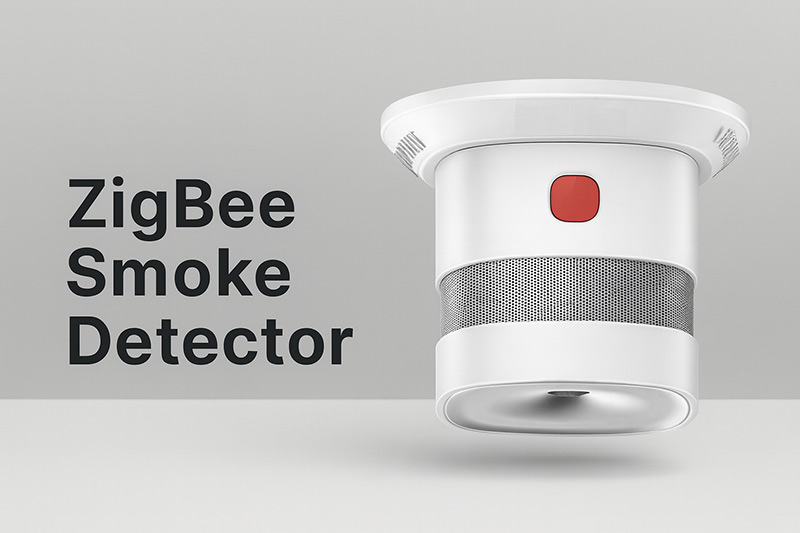As a Zigbee smoke sensor manufacturer, we understand how critical it is for distributors, system integrators, and property developers to choose the right technology for fire safety. The demand for advanced wireless smoke detection solutions is growing rapidly across Europe, North America, and the Middle East. With smart building adoption and IoT expansion, buyers now have access to innovative products such as the Zigbee smoke detector, Zigbee smoke alarm, and Zigbee fire detector, which combine reliable performance with seamless integration into modern ecosystems.
Industry Trends in Smoke Detection
The smoke detection market is shifting from traditional standalone alarms to connected and interoperable systems. Wireless standards like Zigbee are gaining popularity because they support low-power communication, mesh networking, and integration with gateways and cloud platforms. This means facility managers and homeowners can receive real-time alerts, track device status, and connect detection systems to HVAC, lighting, or security platforms.
Technical Comparison: Zigbee vs. Conventional Solutions
Traditional smoke alarms are limited to local sound alerts, while Zigbee-enabled devices offer remote monitoring and networked safety features. For example:
-
Power Efficiency: Zigbee smoke detectors are designed with ultra-low power consumption, extending battery life.
-
Mesh Connectivity: Devices communicate with each other and strengthen the network, ensuring coverage even in large buildings.
-
Interoperability: A Zigbee fire detector can connect with other smart devices like thermostats, gateways, and security systems for holistic safety management.
Applications Across Sectors
-
Residential: Smart homes increasingly rely on Zigbee smoke alarms for real-time safety notifications.
-
Commercial Buildings: Hotels, offices, and shopping malls require centralized monitoring, which Zigbee systems easily support.
-
Industrial Facilities: Manufacturing plants integrate Zigbee fire detectors into automation systems for proactive risk control.
Regulatory and Compliance Insights
When selecting a smoke detection product, it’s crucial to ensure compliance with international standards such as EN 14604 (Europe) and UL 268 (USA). Many Zigbee smoke sensor manufacturers design products that meet these certifications, guaranteeing that the devices align with local regulations and insurance requirements.
Buyer’s Guide: How to Select the Right Device
When sourcing a Zigbee smoke detector or Zigbee smoke alarm, buyers should evaluate the following:
-
Certifications & Standards: Ensure the device meets UL, EN, or CE standards.
-
Battery Life & Maintenance: Look for low-power designs with at least 3–5 years of battery life.
-
Network Compatibility: Confirm the smoke detector works with your Zigbee gateway and other IoT devices.
-
Scalability: Choose a system that can expand across multiple buildings or floors.
-
After-Sales Support: Work with a reliable Zigbee smoke sensor manufacturer offering technical support and customization.
Conclusion
The evolution of smoke detection technology offers buyers new opportunities to improve safety, compliance, and integration with smart systems. By choosing a trusted Zigbee smoke detector, Zigbee smoke alarm, or Zigbee fire detector, businesses and homeowners alike can protect lives and assets more effectively. Partnering with an experienced Zigbee smoke sensor manufacturer ensures access to certified, innovative, and future-ready fire safety solutions.
Post time: Aug-19-2025
